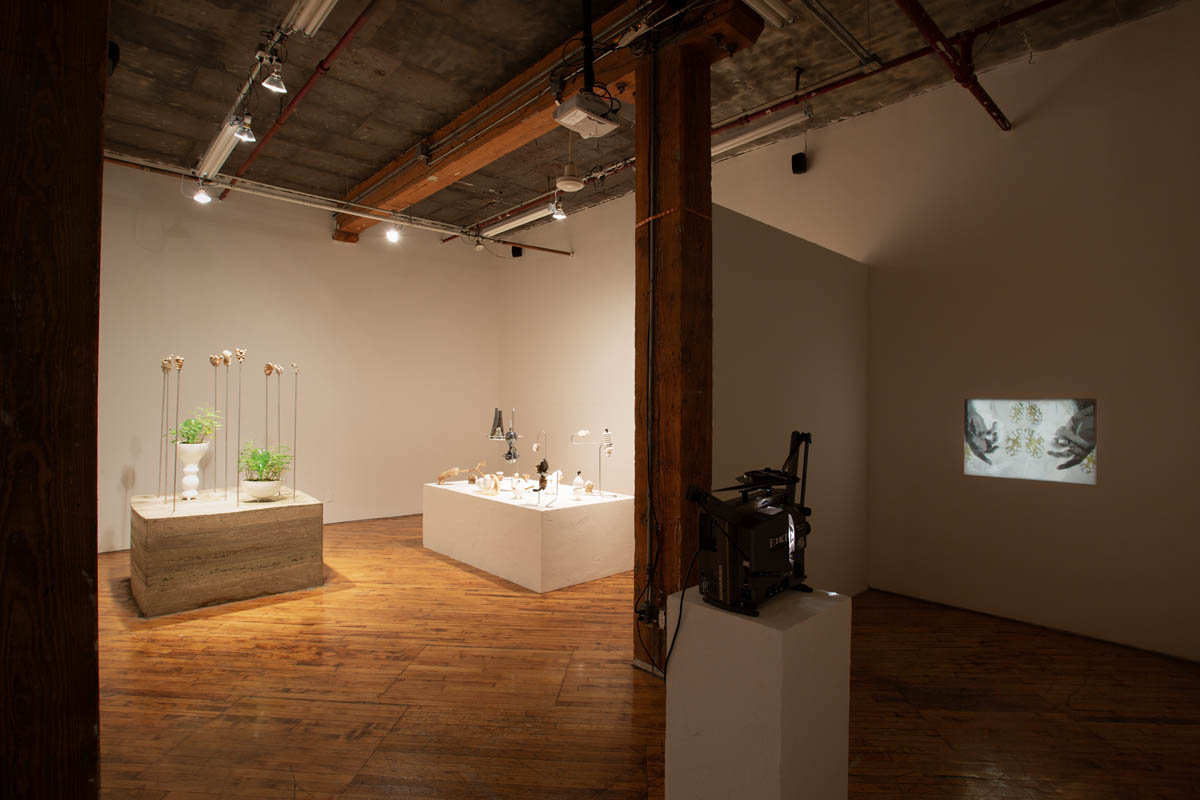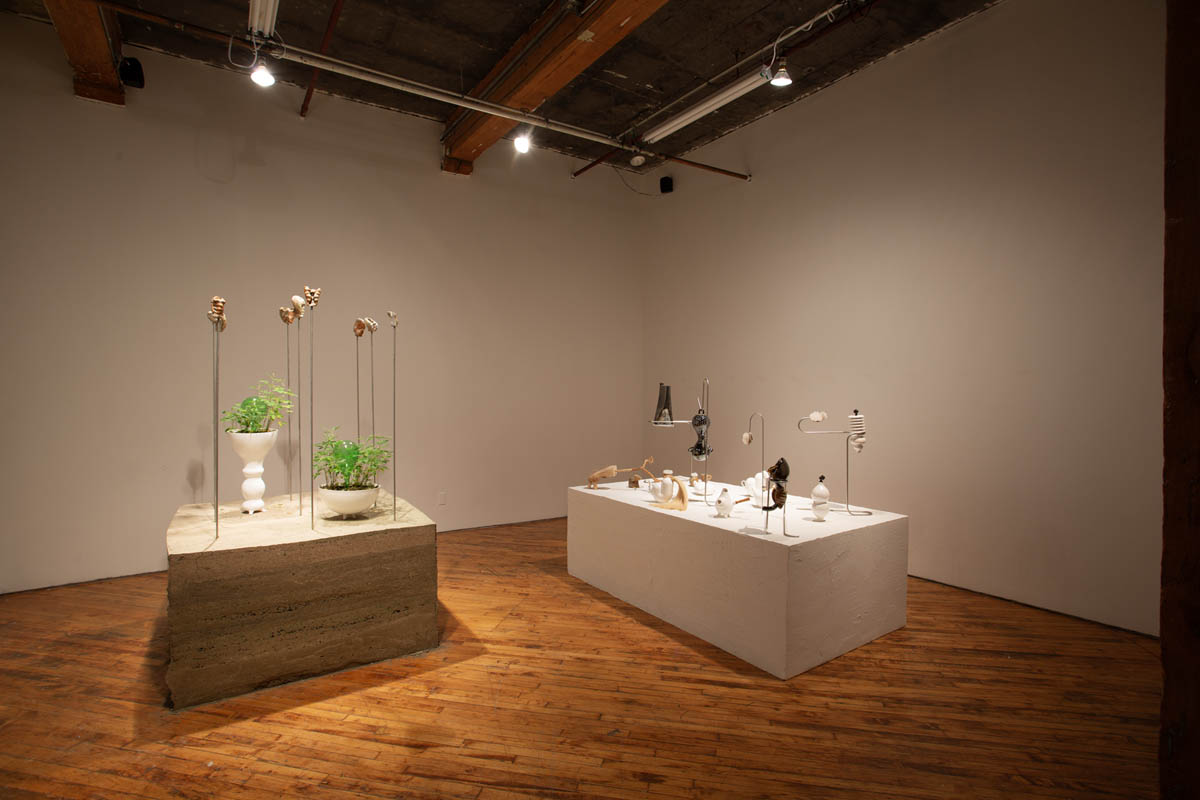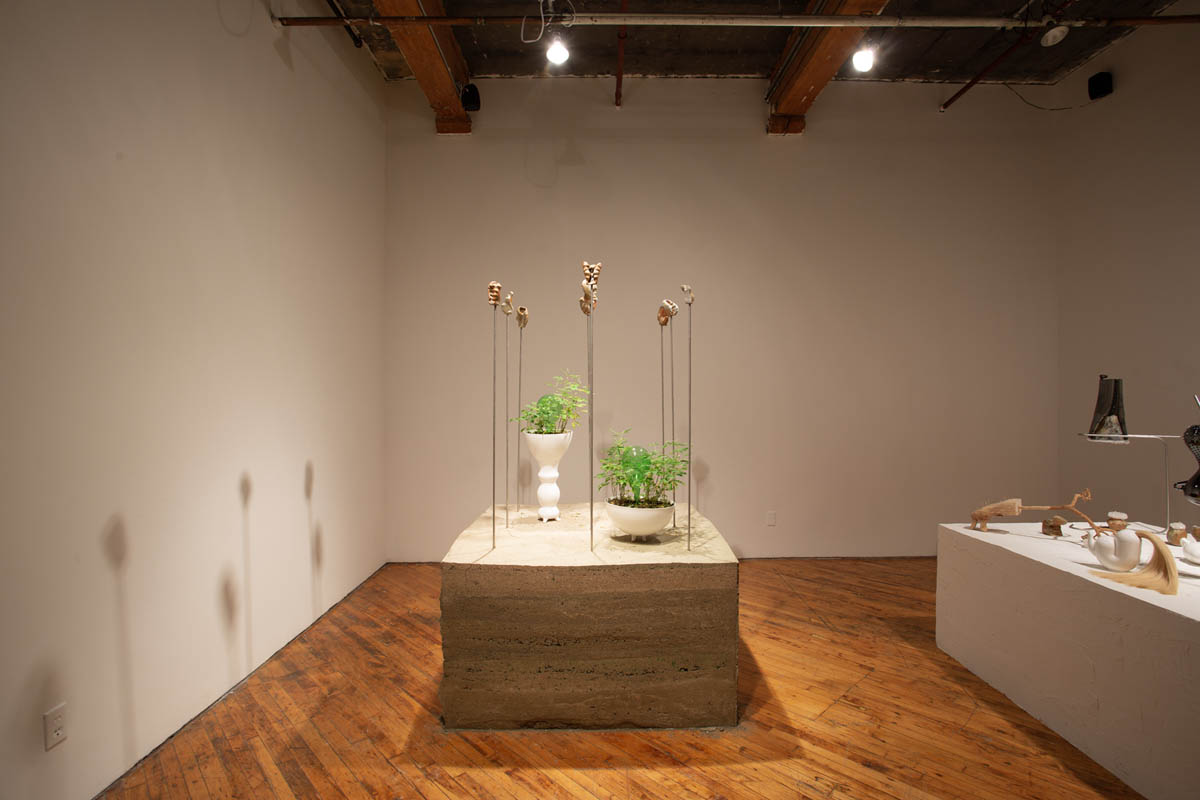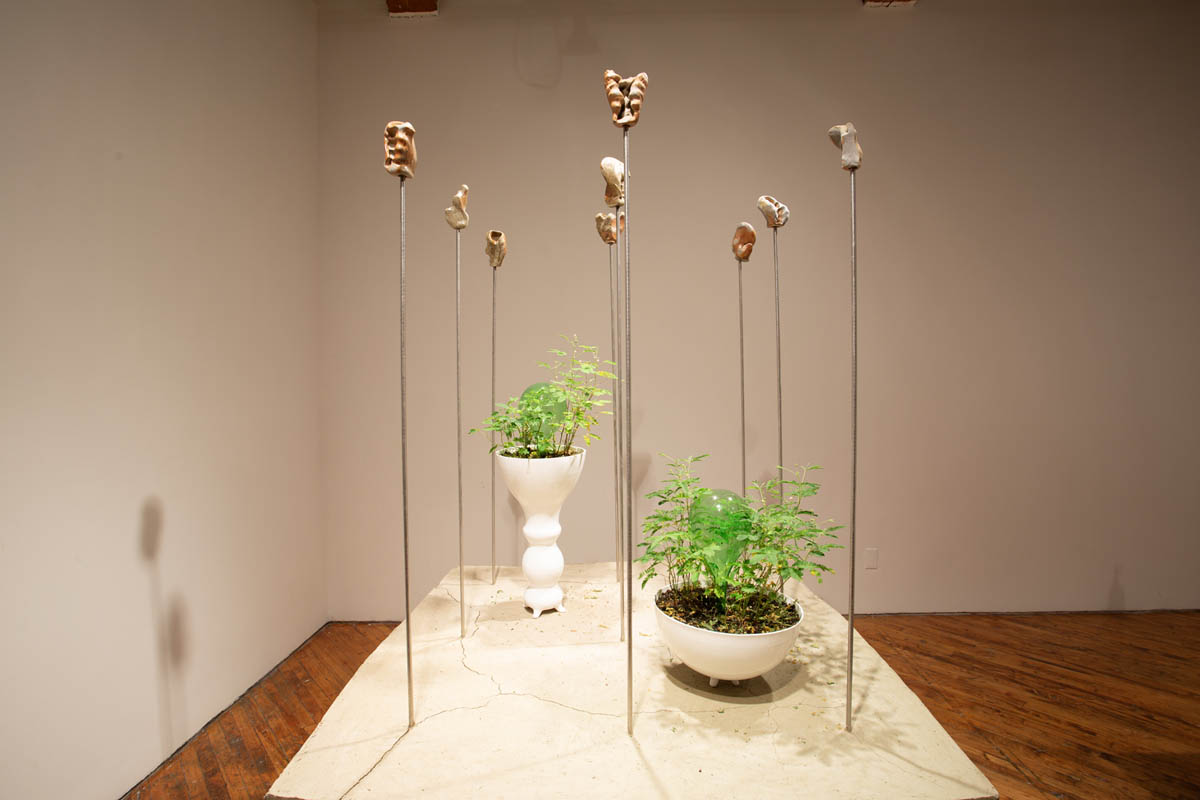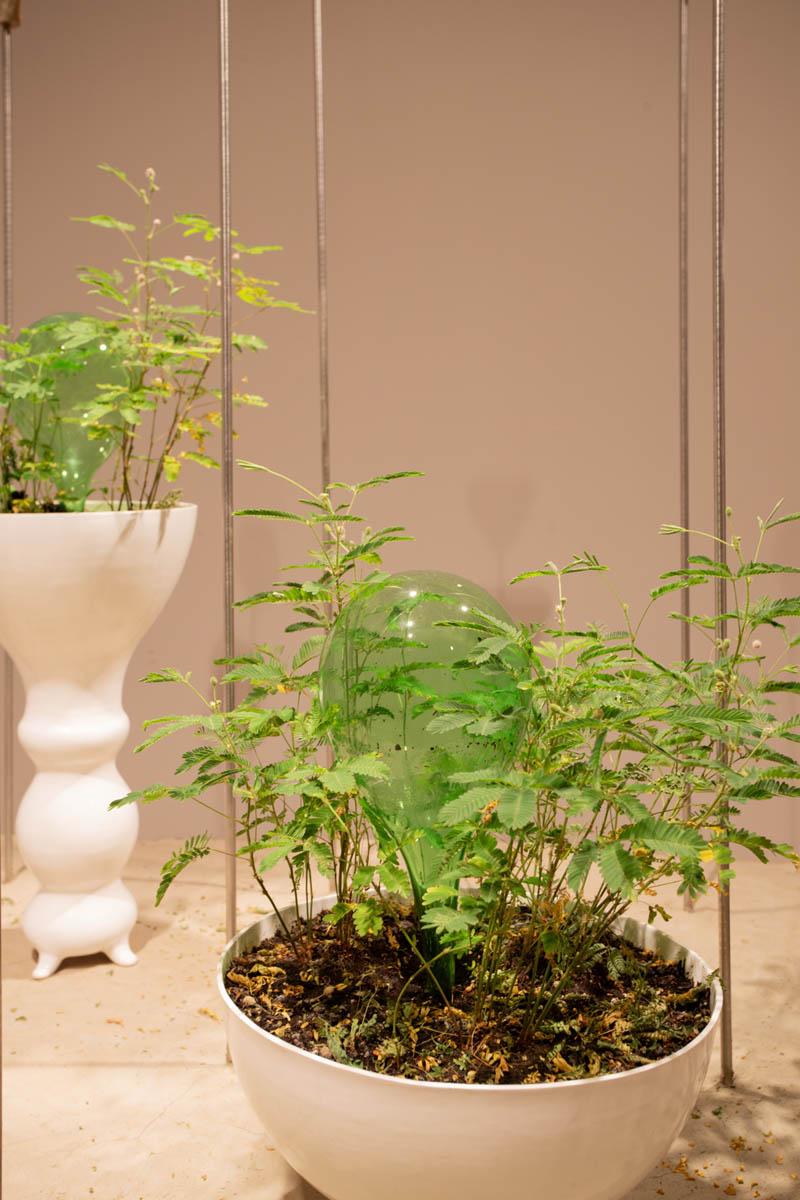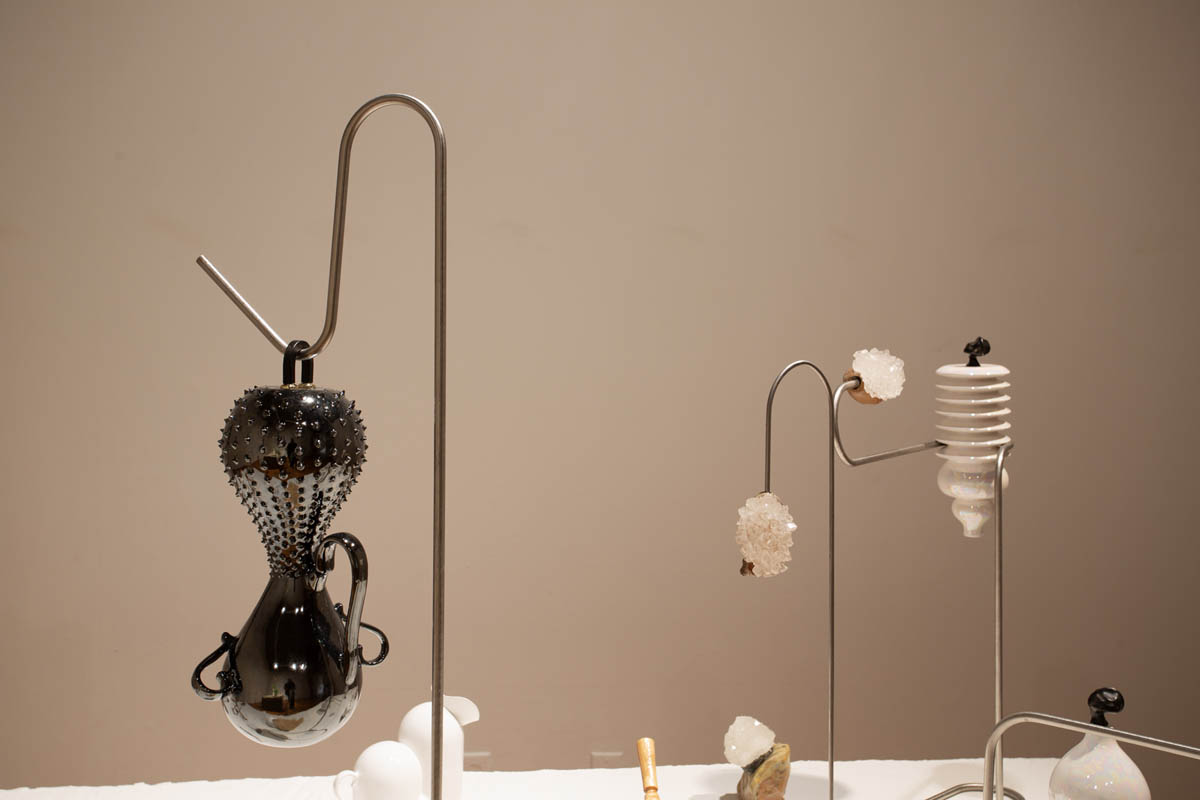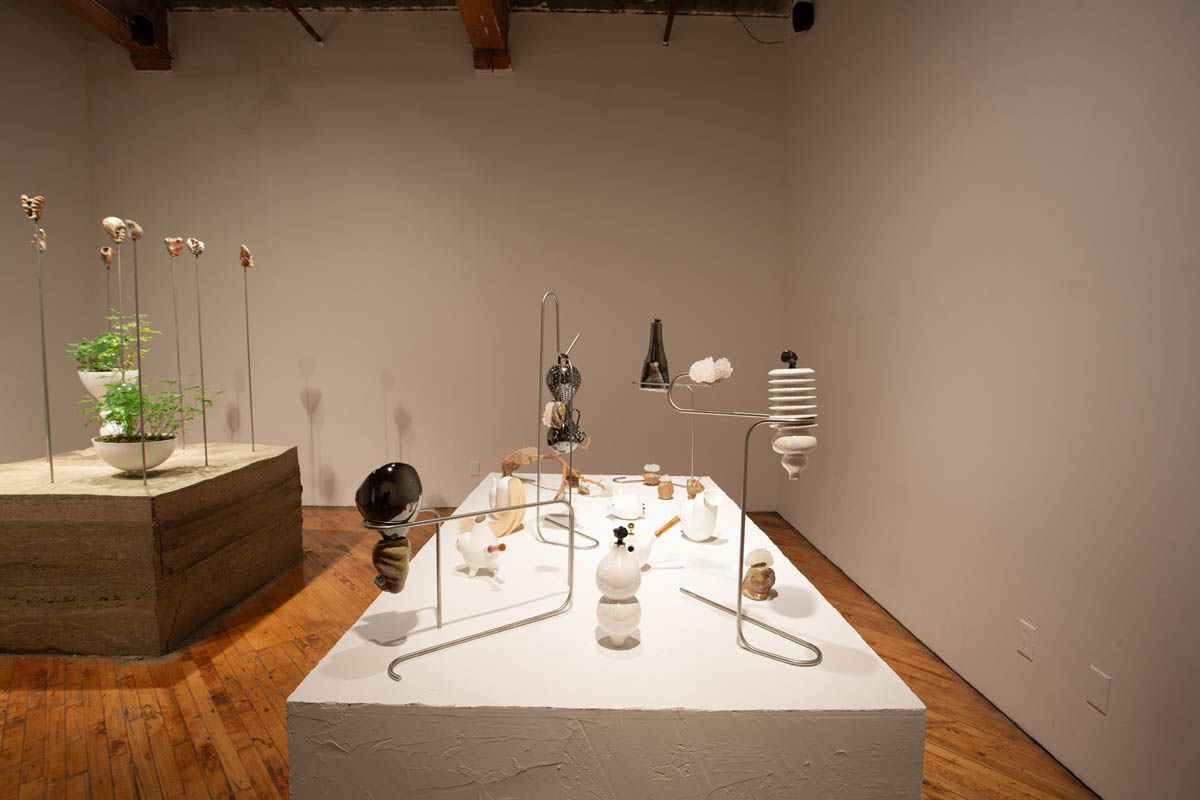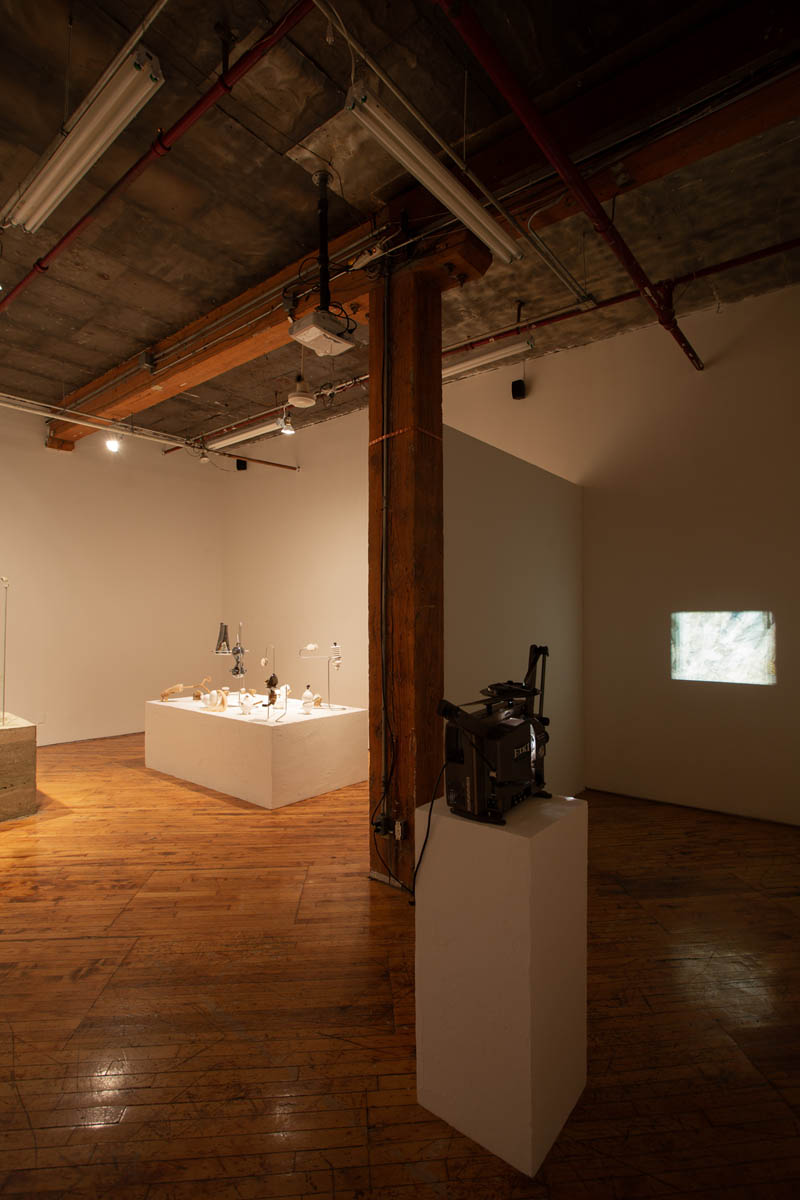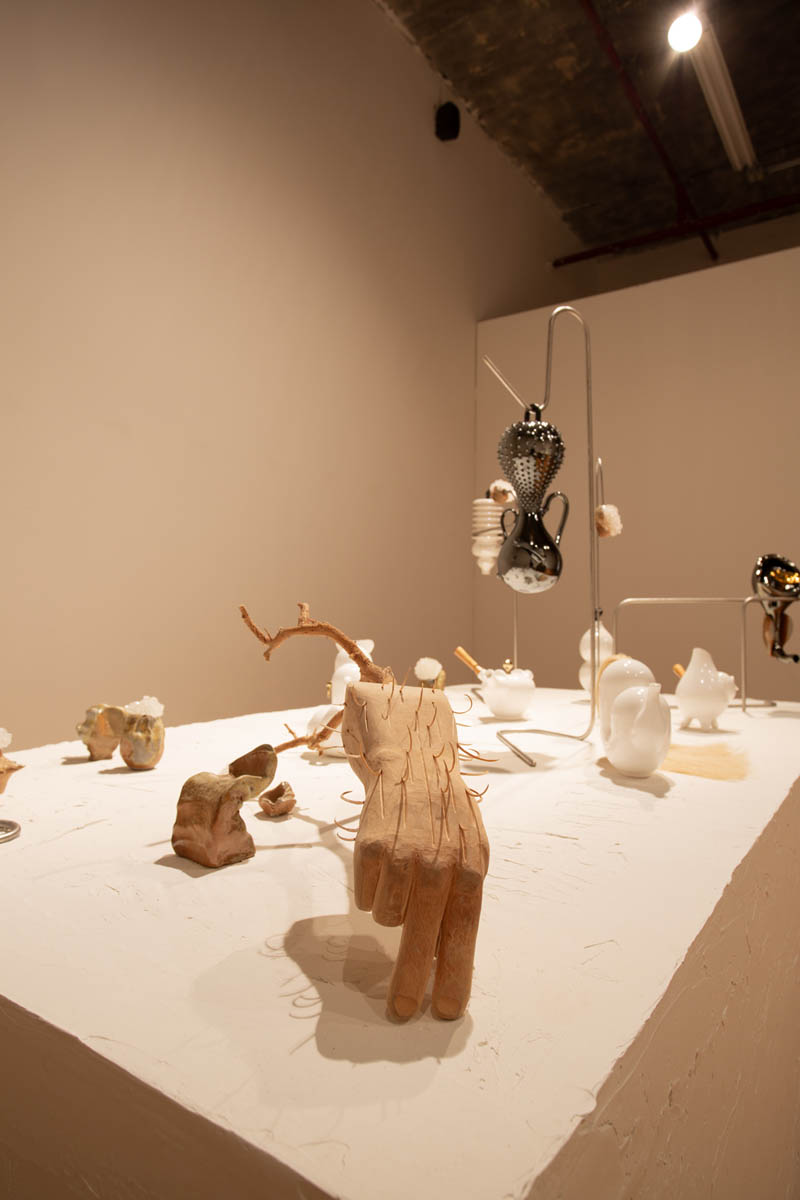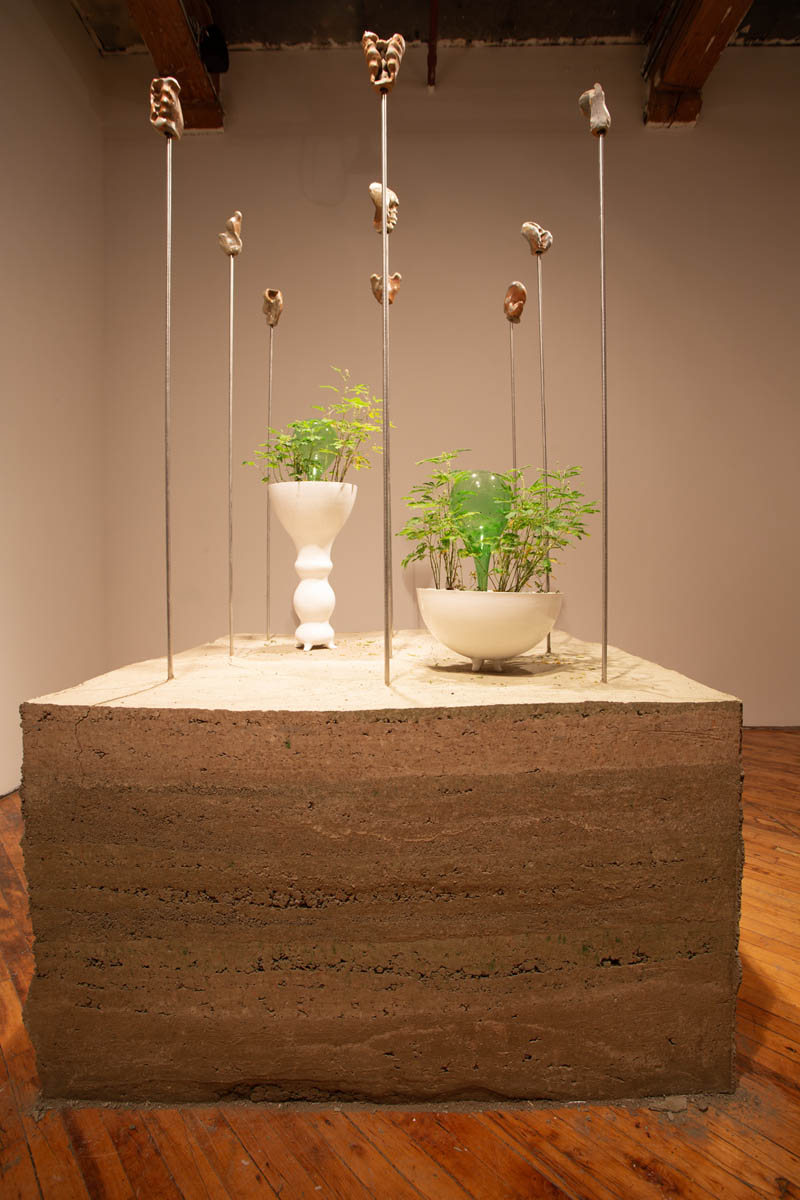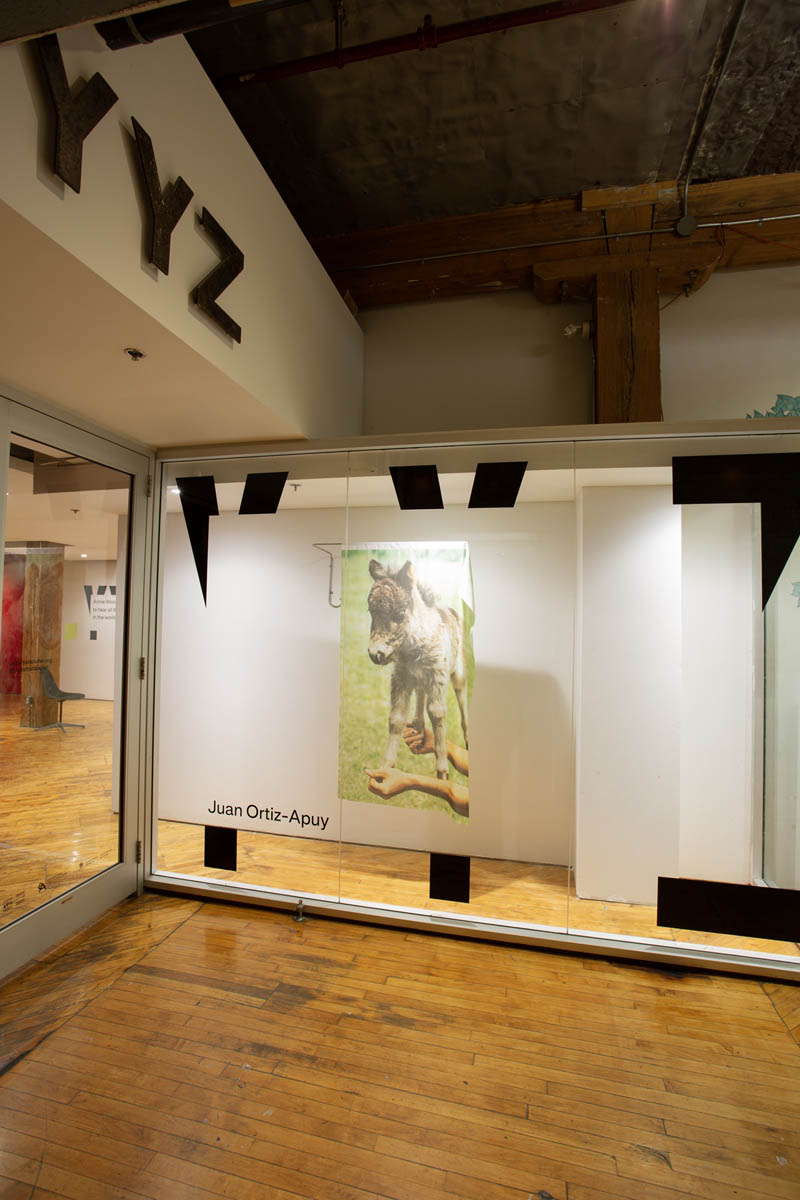Extending the notion of “footprint” to the hand—as in “handprint”—the multimedia installation Coming to Grips explores how touch shapes our relationship with the material world.
Inspired by Mimosa Pudica, a delicate tropical plant native to Central and South America whose fern-like leaves fold inward when touched, the installation brings together woodfired ceramics, sugar crystals, and carved sculptures presented on rammed earth pedestals. As a study of handles, the works incorporate custom-designed metal grips and support structures that examine gesture, touch, and modes of display.
The exhibition also presents A History of an Object in 100 Years in 180 Seconds, a 16mm film composed from hundreds of images of hands taken from the complete 20th-century archive of National Geographic Magazine. Rather than ordering the photographs chronologically, they are sequenced by focal length and composition, producing an illusion of movement and a filmic rhythm from still images.
Circulating endlessly through mass reproduction, these pictures remain lodged in our collective memory as faint impressions—like afterimages. A History of an Object in 100 Years in 180 Seconds traces a century of objects “passing hands,” while reflecting on National Geographic’s history of voyeurism and its ethnographic fascination with “exotic” artifacts presented for Western consumption.
Together, these works remind us that touch—in all its forms, from a grasp to a pinch—is an embodied language through which we know the world, and through which the world knows us.
Documentation: Allan Kosmajac
https://sculpturemagazine.art/the-agency-of-things-a-conversation-with-juan-ortiz-apuy/
Documentation
Artist Bio
Juan Ortiz-Apuy
Juan Ortiz-Apuy is a Canadian-Costa Rican artist based in Tiohtià:ke/Montreal since 2003. He holds a BFA from Concordia University, a Postgraduate Diploma from The Glasgow School of Art, and an MFA from NSCAD University.
His work has been exhibited internationally at venues including Les Abattoirs Museum of Modern and Contemporary Art (France), IKEA Museum (Sweden), DHC/ART Fondation Phi (Montreal), MOMENTA Biennale de l’image (Montreal), Truck Contemporary Art (Calgary), VOX Centre de l’image contemporaine (Montreal), Plug In ICA (Winnipeg), and the Esker Foundation (Calgary).
Ortiz-Apuy has received grants from the Canada Council for the Arts, Le Conseil des arts et des lettres du Québec, and the Social Sciences and Humanities Research Council, and in 2024 was awarded Best International Representation by the Costa Rican chapter of AICA.
He has participated in residencies at MASS MoCA (USA), The Vermont Studio Center (USA), The Frans Masereel Centre (Belgium), and Guldagergaard International Ceramic Research Center (Denmark). He is an Associate Professor at Concordia University and leads Learning From the Cloud Rainforest, a field art school at the edge of a rain forest in Costa Rica.


